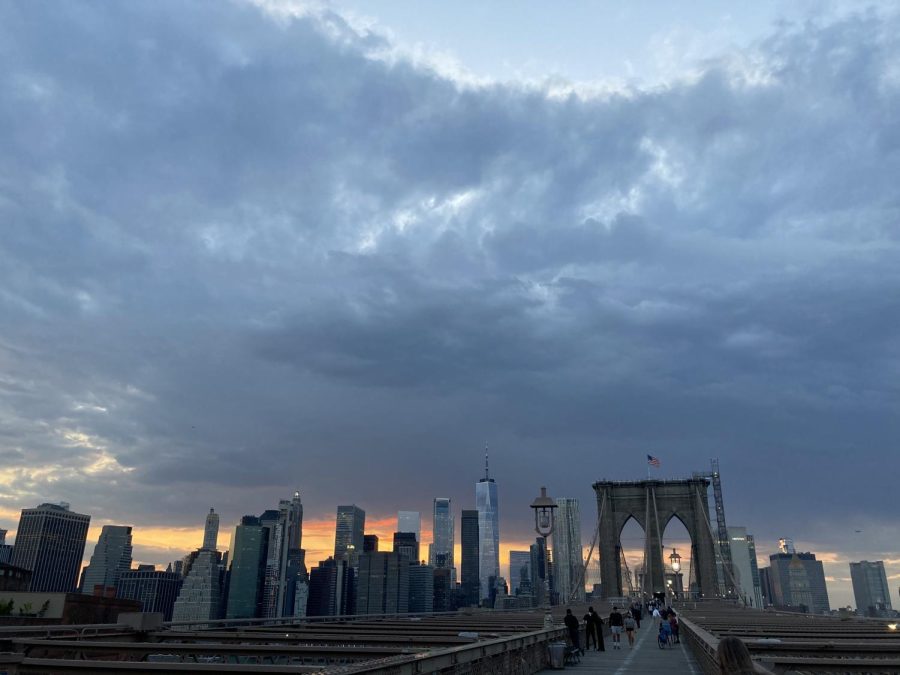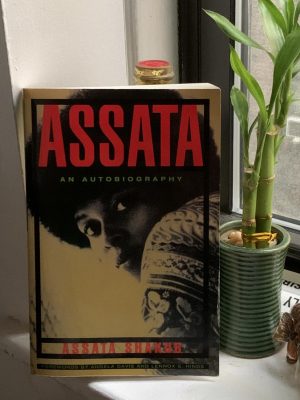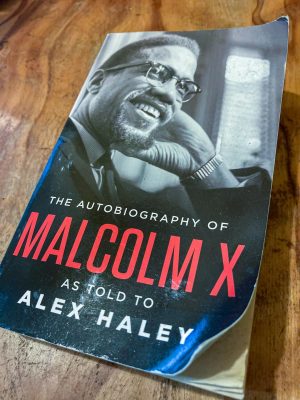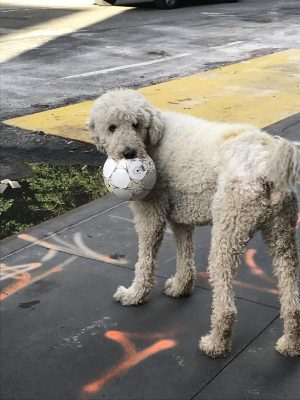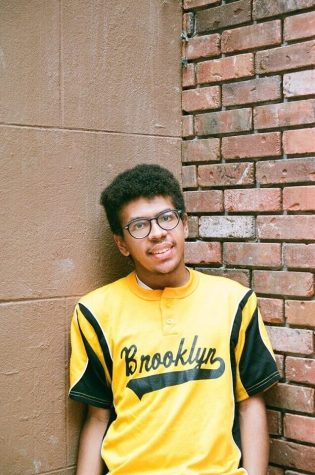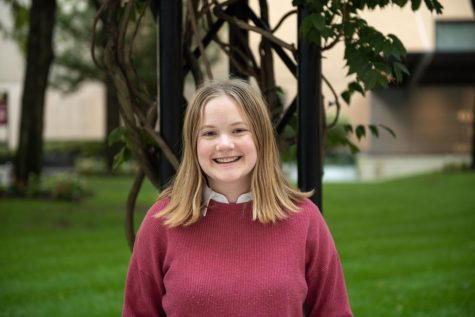Ram Reads: ‘Ask A Native New Yorker,’ Reviewed By A Native New Yorker
Although ‘Ask a Native New Yorker’ offers solid advice for those new to New York, it suffers from more limited horizons than the book would like to admit
Author Jake Dobkin recommends Brooklyn Bridge Park as a great place in New York City for a first date.
September 6, 2022
Fordham has been responsible for generating thousands of New Yorkers since its founding in 1841. Of course, there are many students who are native New Yorkers and familiar with Fordham’s “campus” in New York City before they become students of the university. I am among this population, hailing from Brooklyn’s Coney Island. That being said, when I saw the book “Ask a Native New Yorker” at a Union Square Barnes & Noble, I was curious as to what was being said in the name of myself and millions of others.
Author Jake Dobkin has impeccable credentials to claim the native New Yorker mantle: He was born and raised in the Park Slope neighborhood of Brooklyn and graduated from Columbia University. Dobkin is also the co-founder of Gothamist, a local news website that covers various aspects of life in New York City.
In his book, Dobkin outlines clear and strict terms for who qualifies as a native New Yorker to him. First, one must be born and raised in the city. This disqualifies people who grew up in New York City’s suburbs of Westchester, Long Island and northern New Jersey, as he argues that suburban residents know New York as well as tourists do.
Further, a native must continue to live and work in New York to keep their special status. While vacationing outside of the city is permissible, one must always intend to come back. Opportunities elsewhere are not a legitimate reason to leave because a truly dedicated New Yorker can always find what they want here.
According to Dobkin, there is also no such thing as an honorable discharge from New York for transplants or natives, although Dobkin concedes he may revise his stance if events such as a nuclear apocalypse or climate change make the city uninhabitable.
There are two claims that Dobkin makes that are more challenging to grapple with, even for natives. Although it is acknowledged that native New Yorkers have very different lived experiences, Dobkin argues that all are equal in their status as natives. This universalist claim ignores racial and gender distinctions and income disparities that can make life as a native New Yorker more different than similar due to the challenges one faces, and Dobkin himself unwittingly reveals this at certain points of the book.
The thesis of this book is that New York is the greatest city in the world, so why not have a dialogue with more of it?
Then, there is Dobkin’s final qualification: To be a true native New Yorker, you must die in the city. Given the unpredictable nature of death, I find this to be unfair to some extent. At the same time, there is something admirable about making the status of native New Yorkers a transcendental quality.
While a person who moves to the city can never be a native New Yorker, they can still become a real New Yorker, and heeding Dobkin’s advice is supposed to help in reaching that goal.
Paying homage to his Gothamist roots, the format of this book is mostly a blog-style Q&A. Each chapter has a topic theme, like “How to Recognize a Real New Yorker” and “How to Afford Life in New York.”
Each theme has somewhere between three to six questions on the issue, and they provide a short yet illuminating read. There are also a handful of superlatives, such as the best ways to get around the city and the best places to go for a first date, each of which only takes up a page or two.
Quotes about the city by famous figures like David Letterman and Mark Twain mark the beginning of each chapter, furthering the sublimity of the subject.
Topics tackled by the book include walking fast, taking the subway, apartment hunting and moving in with a significant other. A person can really use the general guidance present in this book to shape their whole life around New York City, as living in the city with kids and as a senior are topics addressed as well.
Dobkin also touches upon social issues, where a reader can see the influence of his upbringing by Jewish socialist parents. Whether it be relatively small-scale problems like noise disturbances near where one resides or large-scale problems such as the lack of investment in public transportation, Dobkin encourages civic engagement through joining or forming a community block association, participating in community board meetings, and voting for candidates that advocate for the policy changes one wants to see. While this advice does not totally apply to all college students, it does for those who are seriously considering staying for more than education.
Through his analysis, Dobkin is critical of New York state’s underfunding of the subway and what he calls the Car-Oriented Derangement Syndrome (CODS), which makes people feel entitled to parking spaces. Dobkin is also persistent in the need for more affordable housing to be built, in response to the price hikes caused by gentrification.
I think that such a unique situation, where one has a degree of established roots in the city but also a degree of flexibility, should have been touched on at some point.
However, not all of Dobkin’s positions are so realistic. There is an odd, Elon Musk-esque scheme proposed where self-driving cars could carpool people toward their destination, eliminating the need for private vehicles.
This proposition seems absurd when one remembers that the city has an expansive bus network that serves this very purpose. Buses are mentioned only twice in this book: once to note the scenic view they offer on the way to Fort Wadsworth and Far Rockaway in Queens and, lastly, for the important transportation role they have for “poor” New Yorkers. The bus is part of my daily commute, and the same can be said for hundreds of thousands of New Yorkers. Statements like this undermine Dobkin’s claim that all native New Yorkers are equal in status.
Although the book contains good advice for those coming to live in the city, Dobkin’s intended audience is disappointingly narrow in two significant ways.
The book is written under the assumption that those moving to the city are coming from another part of the United States. The book features no questions from a prospective or new international immigrant. The thesis of this book is that New York is the greatest city in the world, so why not have a dialogue with more of it? There is still information an international student or a white-collar worker from abroad could learn from reading this book, but not anything that refers to their particular situation.
In addition to failing to address international students, the book also barely acknowledges the diversity of places within the U.S. Many questions note a background from the suburbs, but there are a few who claim to come from smaller cities like Minneapolis or St. Louis.
The book also ignores the perspective of incoming college students. Dobkin’s answers center around people who have already graduated from college and come to the city through white-collar jobs. The fact that there is no commentary on the situation of people who have lived elsewhere in the world and come to New York City for college is a missed opportunity. I think that such a unique situation, where one has a degree of established roots in the city but also a degree of flexibility, should have been touched on at some point.
Overall, “Ask a Native New Yorker” is like its namesake city: Despite its flaws, there is also a certain unique charm to be found. The book deserves a critical reading from city newcomers and yearslong residents alike. For newer residents of the city, Dobkin should only be the first of many native New Yorkers to ask advice from.

